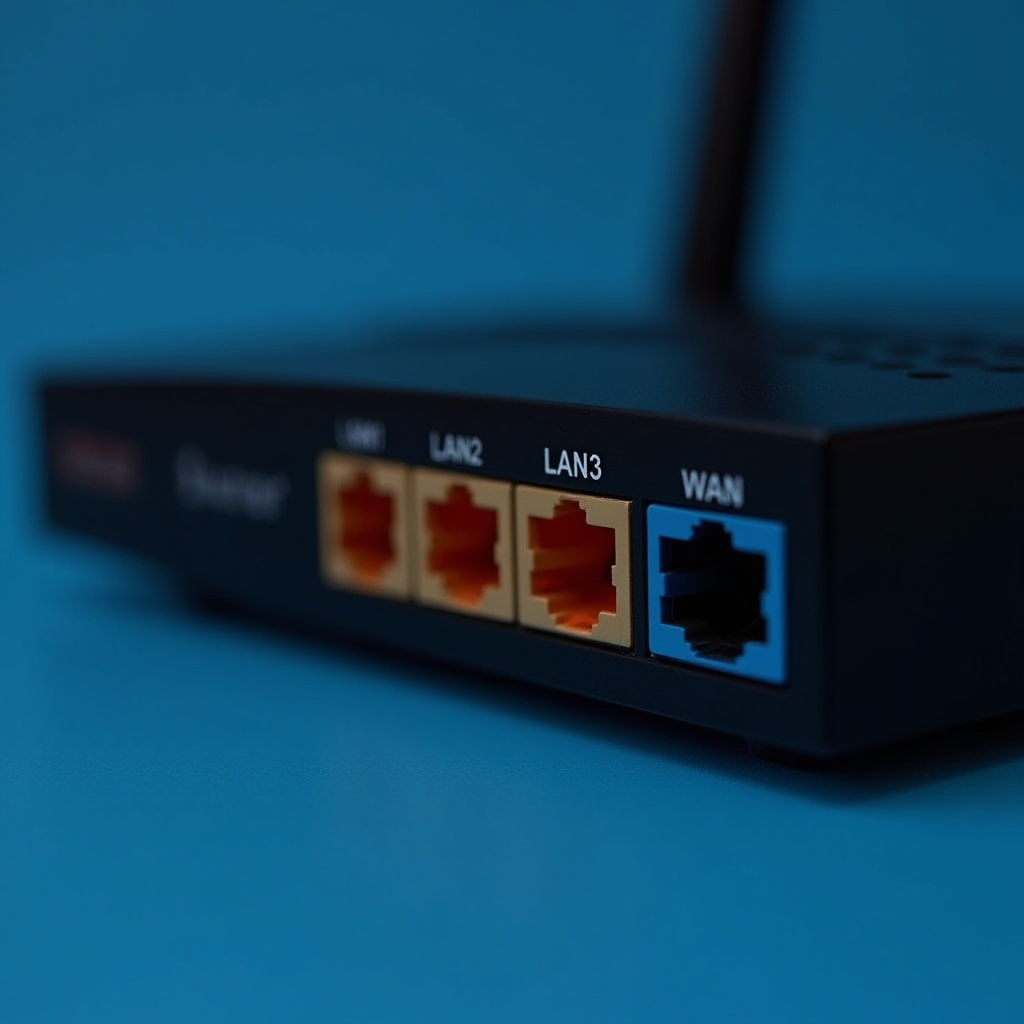What Is a WAN Port and Why It Matters on Your Router
Edited By: Andrew
A WAN Port, short for Wide Area Network port, is a crucial connector on your router that acts as the gateway between your local network and the internet. It's the port where your router plugs into the modem, receiving the internet signal from your Internet Service Provider (ISP) and distributing it to devices across your home or office network.
While it may look just like a regular Ethernet port (usually labeled WAN, Internet, or shown with a globe icon), its function is distinct and essential. Without a working WAN port, your router can’t access the wider internet — even if your devices are properly connected through LAN ports.
Think of it as the front door to your internet — without it, your router has no way to reach the outside world. So, how exactly does it all work?
The Gateway to the Internet: How a WAN Port Works
The WAN Port (short for Wide Area Network) is the socket on your router that connects it to the modem — and through that, to the internet. It’s the single port responsible for bringing internet access into your home or office.
When you connect an Ethernet cable from your modem into the WAN port, your router receives the internet signal from your Internet Service Provider (ISP). The router then takes over and shares that connection with your devices, either wirelessly (Wi-Fi) or through LAN ports for wired connections.
You’ll usually find just one WAN port on a router, often labeled as “WAN”, “Internet”, or marked with a globe icon. It's placed slightly apart from the LAN ports, which are used to connect your local devices — like your PC, printer, or smart TV.
So, while the LAN ports handle local connections, the WAN port is what links your entire network to the outside world — the internet.
WAN vs. LAN: What’s the Real Difference?
While WAN and LAN ports may look similar — especially with those identical Ethernet jacks — they serve very different roles in a network.
A WAN Port connects your router to the internet through a modem, allowing external data to enter your network, while LAN Port connect your local devices — like computers or printers — to the router. Simply put, the WAN port brings the internet in, and the LAN ports share it with everything inside your home or office.
Here’s a quick way to remember it:
- WAN port = Connects router to internet
- LAN ports = Connect router to local devices
So, while both ports use Ethernet cables and look nearly identical, they’re part of two separate layers of your network — one reaching out to the world, and the other keeping things running locally.
WAN vs LAN: Key Differences
| Feature | WAN Port | LAN Port |
|---|---|---|
| Purpose | Connects router to the internet | Connects local devices to the router |
| Number on Router | Typically only one | Usually 2 to 4 (or more) |
| Label/Icon | Labeled “WAN” or “Internet”; globe icon | Labeled “LAN”; often numbered (1,2,3…) |
| Traffic Direction | Incoming from modem (external network) | Outgoing to local devices (internal) |
| Connection Type | Modem to Router | Router to PC, TV, Printer, etc. |

Where to Find the WAN Port on Your Router
Most routers have a single WAN port, and it’s usually easy to spot once you know what to look for. It’s often located slightly apart from the row of LAN ports, sometimes outlined with a different color or labeled clearly as “WAN”, “Internet”, or shown with a globe icon.
The WAN port looks just like any Ethernet port — rectangular, slightly indented — but unlike LAN ports (which connect local devices), the WAN port is where you plug in the Ethernet cable from your modem. If the wrong cable is inserted, or the WAN port is left unplugged, your devices may connect to the router but won’t have internet access.
What Happens if the WAN Port Is Unplugged or Not Working?
If your WAN port is unplugged, your router loses its connection to the internet — even if all your devices are connected to it. You might still be able to open your Wi-Fi settings or access local devices, but webpages, apps, and streaming services won’t load because the router has no internet source to share.
In some cases, the WAN port may be physically damaged or misconfigured, especially if there’s been a power surge or a firmware issue. You’ll often see a “No Internet” warning or a red/orange light on the router. Double-check that the Ethernet cable from your modem is securely plugged into the WAN port , not a LAN port.
If everything is connected correctly and you're still offline, restarting your modem and router, or performing a factory reset, often fixes the issue. But if the WAN port itself is faulty, it may require technical repair or a replacement router.
How to Set Up and Identify a WAN Port Easily
To set up a WAN port, plug one end of an Ethernet cable into your modem and the other end into the router’s WAN port, usually labeled “WAN,” “Internet,” or shown with a globe icon. Once connected, power on both devices and wait for the router’s WAN indicator light to turn solid or start blinking, showing a live connection. This port is often located slightly apart from the LAN ports and may be color-coded for easy identification. If you're unsure, refer to the router’s manual or check for labels near the ports — once connected correctly, the router will begin sharing the internet with your local devices.
